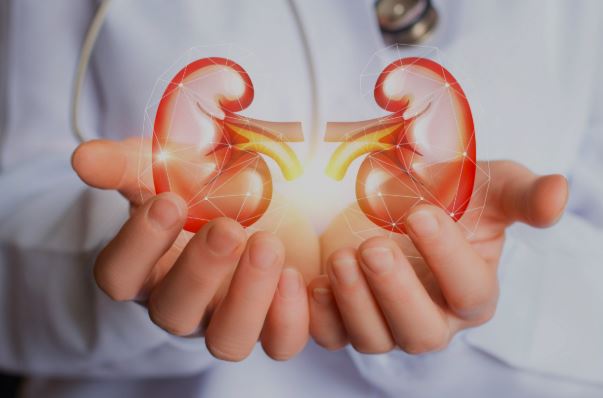
Pediatric Nephrotic Syndromes are kidney disorders that occur in children and lead to the loss of large amounts of protein in the urine. This condition is not a disease in itself but rather a clinical manifestation of underlying kidney dysfunction. Nephrotic syndrome can cause significant swelling, nutritional imbalance, and increased vulnerability to infections, all of which can affect a child’s growth and quality of life. Understanding pediatric nephrotic syndromes is important for early detection, timely treatment, and minimizing long-term kidney damage.
The kidneys play a vital role in filtering waste products, maintaining fluid and electrolyte balance, and preserving essential proteins in the bloodstream. Inside the kidneys are millions of tiny filtering units called nephrons, each containing a glomerulus.
The glomerulus acts like a sieve, allowing waste and excess fluid to pass into urine while keeping important proteins (such as albumin) in the blood.
In nephrotic syndrome, damage to the glomerular filtration barrier makes it “leaky,” allowing protein to escape into the urine (proteinuria).
This loss of protein lowers blood protein levels, reduces oncotic pressure, and causes fluid to shift into tissues, leading to swelling (edema).
In children, nephrotic syndrome can arise from various conditions. The causes are generally divided into primary (idiopathic) and secondary forms:
Primary (Idiopathic) Nephrotic Syndrome
Minimal Change Disease (MCD): The most common cause in children, particularly under age 10. It often responds well to steroid therapy.
Focal Segmental Glomerulosclerosis (FSGS): A more severe condition that may lead to chronic kidney disease.
Membranoproliferative Glomerulonephritis (MPGN): Less common, associated with immune system abnormalities.
Secondary Nephrotic Syndrome
Infections (e.g., hepatitis B, HIV, malaria, tuberculosis).
Autoimmune diseases (e.g., lupus nephritis).
Metabolic or genetic disorders (e.g., congenital nephrotic syndrome).
Medications and toxins (certain antibiotics, nonsteroidal anti-inflammatory drugs).
Children with nephrotic syndrome often present with a characteristic set of signs and symptoms, including:
Edema (Swelling): Often first noticed around the eyes, then in the legs, feet, abdomen, and sometimes the entire body.
Proteinuria: Frothy or foamy urine due to high protein content.
Hypoalbuminemia: Low blood albumin levels, contributing to swelling.
Hyperlipidemia: High cholesterol and triglycerides as the liver tries to compensate for protein loss.
Weight gain: Caused by fluid retention.
Fatigue and irritability: Due to fluid shifts and nutritional imbalances.
Increased risk of infections: Loss of immune-related proteins makes children more susceptible.
Diagnosis involves a combination of medical history, physical examination, and investigations:
Clinical Examination
Detection of swelling, blood pressure measurement, and growth assessment.
Laboratory Tests
Urinalysis: Detects proteinuria and sometimes blood in the urine.
Urine protein/creatinine ratio or 24-hour urine protein: Quantifies protein loss.
Blood tests: Measure albumin, cholesterol, kidney function (creatinine, urea), and electrolytes.
Special Investigations
Kidney biopsy: Recommended in certain cases (e.g., steroid-resistant nephrotic syndrome) to identify the underlying pathology.
Serological tests: To rule out infections or autoimmune diseases.
The management of pediatric nephrotic syndrome depends on the underlying cause and the child’s response to treatment. Goals include controlling protein loss, managing symptoms, and preventing complications.
Medical Treatment
Corticosteroids (Prednisolone): First-line treatment, especially for minimal change disease.
Immunosuppressive drugs: Such as cyclophosphamide, cyclosporine, or tacrolimus, used in steroid-resistant or frequently relapsing cases.
Diuretics: Help manage edema by increasing urine output.
ACE inhibitors/ARBs: Reduce proteinuria and protect kidney function.
Statins: Sometimes used to control hyperlipidemia.
Antibiotics and vaccines: To prevent or treat infections.
Diet and Lifestyle Measures
Low-salt diet: Reduces fluid retention.
Adequate protein intake: To replace losses, though excessive protein should be avoided.
Fluid restriction: In severe edema cases.
Dialysis or Kidney Transplant (in rare cases)
Reserved for children with advanced kidney failure due to progressive disease.
While most pediatric nephrotic syndromes are managed medically, in rare and severe cases where kidney failure develops:
Dialysis may be initiated to filter waste and fluids when the kidneys can no longer function adequately.
Kidney transplantation is considered for children with end-stage renal disease.
The procedure involves surgically placing a healthy donor kidney into the child.
Post-transplant, lifelong immunosuppressive therapy is required to prevent rejection.
For children who undergo dialysis or kidney transplantation:
Dialysis care: Involves regular hospital visits, infection prevention at catheter or fistula sites, and dietary management.
Post-transplant care: Includes immunosuppressive medication adherence, regular blood tests, and monitoring for infections or signs of rejection.
Rehabilitation: Focuses on restoring growth, nutrition, school participation, and psychological support for both child and family.
Nephrotic syndrome and its treatments carry certain risks:
Infections: Due to loss of immune proteins and immunosuppressive therapy.
Thrombosis (blood clots): Protein loss alters clotting balance.
Hypertension: From kidney dysfunction or medications.
Acute kidney injury: Can occur in severe cases.
Side effects of steroids: Weight gain, mood changes, slowed growth, bone weakness.
Progression to chronic kidney disease: Particularly in resistant cases.
Minimal Change Disease: Generally has an excellent prognosis, with most children responding well to steroids and achieving remission.
FSGS or genetic causes: Carry a higher risk of progression to chronic kidney disease and may require advanced therapies.
With timely treatment and proper follow-up, many children can lead healthy, active lives.
Parents should seek medical attention if their child develops:
Persistent or worsening swelling (especially around the eyes or abdomen).
Frothy urine or reduced urine output.
Unexplained weight gain.
Fever, breathing difficulty, or signs of infection.
Side effects from medications (such as severe mood changes or uncontrolled blood pressure).
Pediatric Nephrotic Syndromes are significant kidney disorders that can greatly impact a child’s health, growth, and well-being. Early recognition of symptoms such as swelling and frothy urine is essential for timely medical intervention. With appropriate treatment—ranging from corticosteroids to advanced immunosuppressive therapies—many children achieve remission and maintain a good quality of life. Families are encouraged to work closely with pediatric nephrologists to ensure proper management, follow-up, and support for their child’s long-term health.
Chat With Me